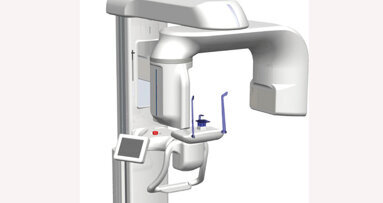As of January 2014, 58 percent of adults Americans owned a smartphone.[1] With the continued advancements in cellular networks and expanded device accessibility, a rapidly increasing number of existing and prospective patients are using mobile devices rather than a desktop browser to browse your practice website.
A strong mobile presence helps you get in front of prospective patients at the moment they’re looking for your practice. If your site doesn’t look good or function properly on a smartphone, it won’t take long for prospective patients to move on to one that does. Here are three reasons you want to ensure your practice website is mobile optimized.
1. Mobile is taking over — When you consider 87 percent of smartphone users access the Internet using their phones,[2] it’s a safe bet that the vast majority of prospective patients are looking at your site on one of these devices. Without a mobile optimized website, you damage your brand and encourage them to seek out competitive providers.
2. Mobile users take action — Today 92 percent of smartphone users seek local information on their device and 89 percent take action after looking up local content.[3] You want that action to be to contact your office for an appointment. If your site is hard to read on the mobile device or does not provide a “click-to-call” phone number, that action will likely take place with another dental care provider.
3. Mobile users will quickly move on — 61 percent of consumers who visit a website that isn’t mobile-friendly will leave to visit a competitor.[4] This fact alone should sound an alert that your practice website needs to be optimized for mobile devices.
The bottom line is that not having a mobile-optimized site can hurt your relationships with current patients, and drive away prospective ones.
Taking the next step
Refraining from optimizing your website for mobile is not an option if you are concerned about sustained practice growth and profitability. The preferred design methodology and the one Google recommends, for a mobile optimized website is called responsive design. A responsive designed practice website will adapt automatically to whatever screen size a patient is using to view it — whether that be a desktop computer, tablet or smartphone. When choosing a company to help market your practice and create a web presence to attract and retain patients, make sure the company has experts in responsive design who work only with the dental industry. With that first step, your efforts to create a mobile-friendly practice will pay off.
(Note: This article was published in Dental Tribune U.S. Edition, Vol. 9, No. 4, April 2014 issue. A complete list of references is available from the publisher.)
According to Pew Internet, 45 percent of American adults owned a smartphone as of December 2012.[1] As these powerful devices increasingly make their way ...
Today’s prospective patients are using their smartphones, laptops and tablets to search for and check out practices like yours. To turn these site ...
Did you know that 60 percent of social-media users are on mobile devices? What happens when one of them tries to contact you, but your site is unusable on ...
The clock is ticking. In 2025, your website is your front desk, your waiting room and your first impression. If your site is more than four years old — ...
NEW YORK, N.Y., USA: The American Academy of Cosmetic Dentistry (AACD), the world’s largest non-profit membership association dedicated to the art and...
My Orthodontist mobile app is the latest addition to Dolphin’s line of mobile products. It is also Dolphin’s first product designed for the ...
For decades, dentists around the world have profited from high demand for dental clinics by selling to a dental support organisation (DSO), entering ...
In today’s rapidly changing health-care environment, 3-D imaging is becoming an essential tool for diagnosis and treatment in dental and specialty ...
In a recent survey conducted by www.match.com, more than 5,000 American single adults, both male and female, were asked how they judge members of the ...
Researchers have found that flossing before brushing may be the ideal sequence for the most thorough removal of dental plaque. The report is featured in the...
Live webinar
Wed. 14 January 2026
12:00 PM EST (New York)
Dr. Théo Laplane, Dr. Robert Gottlander DDS
Live webinar
Fri. 16 January 2026
12:00 PM EST (New York)
Live webinar
Mon. 19 January 2026
1:00 PM EST (New York)
Philipp Kopp, Michael Seeber
Live webinar
Thu. 22 January 2026
9:00 AM EST (New York)
Prof. Judith Jones D.D.S; M.P.H., Prof. Kakuhiro Fukai D.D.S., Ph.D, Dr. Bathsheba (Bethy) Turton
Live webinar
Thu. 22 January 2026
2:00 PM EST (New York)
Dr. Nicola M. Grande DDS, PhD
Live webinar
Wed. 28 January 2026
8:00 AM EST (New York)
Live webinar
Wed. 28 January 2026
11:00 AM EST (New York)
Prof. Dr. Jan-Frederik Güth



 Austria / Österreich
Austria / Österreich
 Bosnia and Herzegovina / Босна и Херцеговина
Bosnia and Herzegovina / Босна и Херцеговина
 Bulgaria / България
Bulgaria / България
 Croatia / Hrvatska
Croatia / Hrvatska
 Czech Republic & Slovakia / Česká republika & Slovensko
Czech Republic & Slovakia / Česká republika & Slovensko
 France / France
France / France
 Germany / Deutschland
Germany / Deutschland
 Greece / ΕΛΛΑΔΑ
Greece / ΕΛΛΑΔΑ
 Hungary / Hungary
Hungary / Hungary
 Italy / Italia
Italy / Italia
 Netherlands / Nederland
Netherlands / Nederland
 Nordic / Nordic
Nordic / Nordic
 Poland / Polska
Poland / Polska
 Portugal / Portugal
Portugal / Portugal
 Romania & Moldova / România & Moldova
Romania & Moldova / România & Moldova
 Slovenia / Slovenija
Slovenia / Slovenija
 Serbia & Montenegro / Србија и Црна Гора
Serbia & Montenegro / Србија и Црна Гора
 Spain / España
Spain / España
 Switzerland / Schweiz
Switzerland / Schweiz
 Turkey / Türkiye
Turkey / Türkiye
 UK & Ireland / UK & Ireland
UK & Ireland / UK & Ireland
 International / International
International / International
 Brazil / Brasil
Brazil / Brasil
 Canada / Canada
Canada / Canada
 Latin America / Latinoamérica
Latin America / Latinoamérica
 China / 中国
China / 中国
 India / भारत गणराज्य
India / भारत गणराज्य
 Pakistan / Pākistān
Pakistan / Pākistān
 Vietnam / Việt Nam
Vietnam / Việt Nam
 ASEAN / ASEAN
ASEAN / ASEAN
 Israel / מְדִינַת יִשְׂרָאֵל
Israel / מְדִינַת יִשְׂרָאֵל
 Algeria, Morocco & Tunisia / الجزائر والمغرب وتونس
Algeria, Morocco & Tunisia / الجزائر والمغرب وتونس
 Middle East / Middle East
Middle East / Middle East





























































To post a reply please login or register